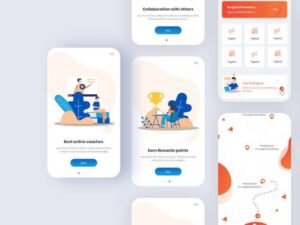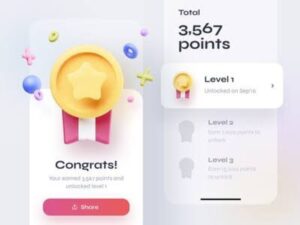
According to research, Games make us smart, happy, elevate our energy level and help us from psychological damage. However, psychology states that our brain releases dopamine, which means that our brains naturally accept or indulge in gaming activities. Therefore, Games are an essential part of life, because it is fun and enticing.
What Is Gamification?
Gamification is the act of applying game mechanics or designs to non-game products. The process of transferring positive characteristics of a game into something that is not a game.
Gamification In UX Design
This is an act of creating game-like experiences in non-game settings. Creating fun experiences for serious situations, enables designers to transform tedious into fun activities for the users.
Art technology is at a fast pace and the rise of gaming experiences is quite fascinating. Gamification in UX is rightly the manifestation of the term, “Care about the user”. Take, for instance, you have a financial app or digital banking system. A user is at the onboarding stage of your app, and through the Splash page down to the Successful page, tiny game-like features are popping up. These features make the user feel relaxed and entertained while doing serious work.
Different Methods Of Gamification In UX Design
There are different methods of gaming UX designers use to spice up their websites and application experiences. The reason why they adopt these methods is to increase end-user engagements and retain them.

1. Stickers and Badges
As the name implies, stickers and badges are awarded to you whenever you complete a stage in the web or app experience. Just like in video games, awarding rewards gives room for creative experimentations.
Meanwhile, stickers are mostly appreciated by users.
2. Journey
The game mechanics can make a user feel safe using a product. The features make the user’s Interaction easy and understandable. For example, If a user is in the onboarding process when mistakes are altered, mechanics play a substantial role by helping the user overcome fear, and making him finish the process with ease.
3. Leaderboards
It is always very exciting when you’re leading in a game. This is even more exciting and adventurous using a system that ranks the user. This can make them frequent an App or Web.
Constraints to gamification in UX design
In every given stage, enabling the user to complete a certain task can get the user excited. Thus, making the user want to continue to the next stage quickly.
For Example, The Candy Crush game has an addictive strategy with the use of its mechanics. It continuously encourages you to move to the next stage fast.

4. Points
It is a common system that is used to Award players with Points when they are making progress in a game. For Instance,
A product can achieve the same for users and stakeholders. It is a technique widely used by products like Fit apps, educational apps and so on. encourages users to take the next step.
5. Challenge
To some of us, Challenges are opportunities. Challenges make us step out of our comfort zone. Hence, when applied in UX it helps users take expected actions immediately.

The Importance Of Gamification In User Experience Design
As we have explained above, The use of gamification in UX is fun and necessary for a good user experience.
The presence of gaming in UX makes the user return to the product over again because the experience is full of adventures, rewards, challenges, points etc. Gamification enables designers to create exceptional products.
Conclusion
The application of Gamification can increase the usage of a product by users because it triggers users emotions and reactions making a product remarkably successful.
